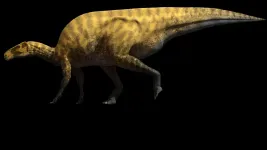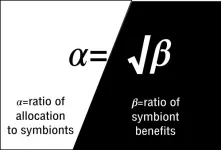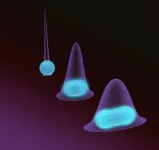Mapping urban greenspace use with cellphone GPS data
2021-07-07
(Press-News.org) GPS data from cell phones may provide insight into how city inhabitants are using their urban greenspaces, in a study published July 7, 2021 in the open-access journal PLOS ONE by Meghann Mears and Paul Brindley from the University of Sheffield, UK, and colleagues.
Urban greenspaces confer a range of health and well-being benefits on city inhabitants and provide connection to nature. In this study, Mears and colleagues use cellphone GPS data to assess how frequently residents of the city of Sheffield in the UK engage with their local urban greenspaces, and whether this engagement was different across demographic groups.
The authors used the "Shmapped" app, developed as part of the Improving Well-being through Urban Nature project, to track how frequently 240 users based in Sheffield who had downloaded the app visited or traveled near any of the 945 green/open spaces identified by the Sheffield City Council from July 1, 2017-October 6, 2018. Of these 240 Shmapped users, 156 were male, 81 female; 214 were white, 21 were Black, Asian, or another ethnic minority; 126 were ages 18-33, and 112 were ages 34-71.
After cleaning their data, the authors were left with 5,186 valid trips. The median trip length was 190 meters and the median duration 4 minutes 36 seconds; the average Shmapped user made just over one trip per day to a greenspace, with a weekly total duration of nearly an hour and total distance of around 2.5 km. Gender, age, and ethnicity all had a significant effect on the total duration (average trip duration multiplied by trip frequency) of users' trips to greenspaces: women's trips were on average 30 percent longer than men, people aged 34 and over made trips 31 percent longer than younger users, and ethnic minority users spent 34 percent less time making trips to greenspace than white users. The authors also found significant demographic effects in terms of total trip distance (average trip distance times trip frequency): women's trip distance was 29 percent longer than that of men; people aged over 34 traveled 39 percent further than those under 34; and ethnic minority greenspace users traveled 34 percent more distance than white users. Interestingly, people who spent more time outside as a child also traveled 40 percent further than those who spent less time outside.
The green spaces identified by Shmapped don't include the extensive countryside areas surrounding Sheffield, in easy visiting distance for many of the city's residents; the app was also not able to track any Sheffielders' visits to out-of-town green spaces. Additionally, all users were self-selected, so the user makeup is not an accurate general reflection of Sheffield's population. Lastly, the authors note that they weren't able to capture the users' reasons behind each visit, information that would be extremely useful for this type of analysis.
However, the results thus far indicate that most day-to-day greenspace visits within Sheffield are incidental (due to traveling through the area, rather than a specific visit to the area), and highlight the importance of including social and cultural factors when investigating who uses and who benefits from urban greenspace. The authors note that many reasons are likely behind the observed demographic differences in greenspace use, including socioeconomic factors, differing cultural norms, and the legacy of discrimination.
The authors add: "The paper outlines a method to clean GPS data to identify trips within urban greenspaces and shows that local users of the app spend an average of an hour per week visiting greenspaces, including around seven trips per week and covering a total distance of just over 2.5 km. Most day-to-day visits to urban greenspace are incidental, i.e. travelling through rather than to greenspace."
INFORMATION:
Citation: Mears M, Brindley P, Barrows P, Richardson M, Maheswaran R (2021) Mapping urban greenspace use from mobile phone GPS data. PLoS ONE 16(7): e0248622. https://doi.org/10.1371/journal.pone.0248622
Funding: MM, PBr, PBa, MR and RM received funding from grant number NE/N013565/1, awarded by the Natural Environment Research Council (https://nerc.ukri.org/), Economic and Social Research Council (https://esrc.ukri.org/), Biotechnology and Biological Sciences Research Council (https://bbsrc.ukri.org/), Arts and Humanities Research Council (https://ahrc.ukri.org/) and Department for Environment, Food & Rural Affairs (https://www.gov.uk/government/organisations/department-for-environment-food-rural-affairs). The funders had no role in study design, data collection and analysis, decision to publish, or preparation of the manuscript.
Competing Interests: The authors have declared that no competing interests exist.
In your coverage please use this URL to provide access to the freely available article in PLOS ONE: https://journals.plos.org/plosone/article?id=10.1371/journal.pone.0248622
[Attachments] See images for this press release:

ELSE PRESS RELEASES FROM THIS DATE:
2021-07-07
New iguanodon-like dinosaur identified from jawbone fossil from Spain was likely a 6-8m long herbivore, closely related to species found in modern-day China and Niger.
INFORMATION:
Article Title: A new Styracosternan hadrosauroid (Dinosauria: Ornithischia) from the Early Cretaceous of Portell, Spain
Funding: The authors received no specific funding for this work.
Competing Interests: The authors have declared that no competing interests exist.
Article URL: https://journals.plos.org/plosone/article?id=10.1371/journal.pone.0253599
...
2021-07-07
Brain microstructure may help explain the benefits of physical activity on cognition in older adults, according to MRI scans of 318 brains post-mortem.
INFORMATION:
Article Title: Physical activity, brain tissue microstructure, and cognition in older adults
Funding: This work was supported in part by the National Institute on Aging (https://www.nia.nih.gov) grants K25 AG61254 (RJD), K01 AG64044 (VNP), K01 AG50823 (BDJ), R01 AG17917 (DAB), R01 AG47976 (ASB), R01 AG56352 (ASB), R01 AG64233 (JAS, KA), and P30 AG10161 (DAB), the National Institute of Neurological Disorders and Stroke (https://www.ninds.nih.gov) grant UH3 NS100599 ...
2021-07-07
HOUSTON - (July 7, 2021) - A thin shell of soft polymer can help keep knotty ceramic structures from shattering, according to materials scientists at Rice University.
Ceramics made with 3D printers crack under stress like any plate or bowl. But covered in a soft polymer cured under ultraviolet light, the same materials stand a far better chance of keeping their structural integrity, much like a car windshield's treated glass is less likely to shatter.
The research at Rice's Brown School of Engineering, which appears in Science Advances, demonstrates the concept on schwarzites, complex lattices that for decades existed only as theory but can now be made with 3D printers. With added polymers, they come to resemble structures ...
2021-07-07
Microscopists have long sought to find a way to produce high-quality, deep-tissue imaging of living subjects in a timely fashion. Until now, they had to choose between image quality or speed when it comes to looking into the inner workings of complex biological systems.
Such a development would have a powerful impact on researchers in biology and in neuroscience, experts say. Now Dushan N. Wadduwage, a John Harvard Distinguished Science Fellow in Imaging at the FAS Center of Advanced Imaging, along with a team from MIT, detailed a new technique that would make that possible in a report in Science Advances.
In the paper, the team presents a new process that uses computational imaging to get high resolution images at a rate 100 to 1,000 times faster than other state-of-the-art ...
2021-07-07
Increased acidity in the atmosphere is disrupting the ecological balance of the oceans, according to new research led by the University of East Anglia (UEA).
The first study to look at acidity's impact on nutrient transport to the ocean demonstrates that the way nutrients are delivered affects the productivity of the ocean and its ability to absorb CO2 from the atmosphere.
The research, 'Changing atmospheric acidity as a modulator of nutrient deposition and ocean biogeochemistry', is published today in Science Advances. The analysis was carried out by an international team of experts, sponsored by the United Nations Group of Experts on the Scientific Aspects of Marine Environmental Protection (GESAMP).
Prof Alex Baker, professor of marine and atmospheric chemistry ...
2021-07-07
To create high-resolution, 3D images of tissues such as the brain, researchers often use two-photon microscopy, which involves aiming a high-intensity laser at the specimen to induce fluorescence excitation. However, scanning deep within the brain can be difficult because light scatters off of tissues as it goes deeper, making images blurry.
Two-photon imaging is also time-consuming, as it usually requires scanning individual pixels one at a time. A team of MIT and Harvard University researchers has now developed a modified version of two-photon imaging that can image deeper within tissue and perform the imaging much more quickly than what was previously possible.
This kind of imaging could allow scientists to more rapidly obtain ...
2021-07-07
Metastatic tumors originating from notoriously aggressive triple-negative breast cancer that emerge in the lungs contain a more diverse array of cancer cells than those that arise in the liver, according to a new study in mice and organs from deceased cancer patients. The study also identified a set of genes that distinguish lung and liver metastases; together, the findings may inform future research on how targeted therapies impact tumors across various microenvironments. While scientists have known that the presence of distinct tumor cell populations within the same tumor drives breast cancer progression, it has not been fully understood why this dangerous cellular diversity develops within some tumors and not others. To investigate ...
2021-07-07
From above, the Antarctic Ice Sheet might look like a calm, perpetual ice blanket that has covered Antarctica for millions of years. But the ice sheet can be thousands of meters deep at its thickest, and it hides hundreds of meltwater lakes where its base meets the continent's bedrock. Deep below the surface, some of these lakes fill and drain continuously through a system of waterways that eventually drain into the ocean.
Now, with the most advanced Earth-observing laser instrument NASA has ever flown in space, scientists have improved their maps of these hidden lake systems under the West Antarctic ice sheet--and ...
2021-07-07
"Equal pay for equal work," a motto touted by many people, turns out to be relevant to the plant world as well. According to new research by Stanford University ecologists, plants allocate resources to their microbial partners in proportion to how much they benefit from that partnership.
"The vast majority of plants rely on microbes to provide them with the nutrients they need to grow and reproduce," explained Brian Steidinger, a former postdoctoral researcher in the lab of Stanford ecologist, Kabir Peay. "The problem is that these microbes differ in how well they do the job. We wanted to see how the plants reward their microbial employees."
In a new study, published July 6 in the journal American Naturalist, the researchers investigated ...
2021-07-07
Very recently, researchers led by Markus Aspelmeyer at the University of Vienna and Lukas Novotny at ETH Zurich cooled a glass nanoparticle into the quantum regime for the first time. To do this, the particle is deprived of its kinetic energy with the help of lasers. What remains are movements, so-called quantum fluctuations, which no longer follow the laws of classical physics but those of quantum physics. The glass sphere with which this has been achieved is significantly smaller than a grain of sand, but still consists of several hundred million atoms. In contrast to ...
LAST 30 PRESS RELEASES:
[Press-News.org] Mapping urban greenspace use with cellphone GPS data





